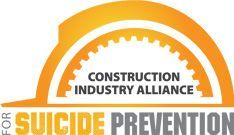prevention and INTERVENTION
These resources focus on building protective factors into the workplace that help employers address risk factors and recognize warning signs to reduce the likelihood that an employee attempts or dies by suicide.
They are designed to focus on helping company leaders make suicide prevention a health and safety priority, arm the workforce with the knowledge to recognize warning signs, normalize conversations surrounding suicide and mental health, cultivate internal champions, create supportive networks, and clear up misconceptions.
take action
- Incorporate CIASP ToolBox Talks into your safety plan.
- Ask your Employee Assistance Program
(EAP) provider to present sessions or lunch and learns on mental health and coping techniques.
- Promote the free, anonymous
MindWise screening tool (available in Spanish) to your employees.
- Incorporate these
short videos into your safety training.
- Distribute hardhat stickers, poker chips, and wallet cards with warning signs and helplines.
Request a supply
from CIASP.
- Display
posters in trailers, break rooms, or on company message boards.
Download here.
- Complete
the
LivingWorks Start online training program.
- Read and Share:
Educate Workers About Employee Assistance Programs to Address Behavioral Health
postvention
These resources are intended to assist employers who have had an employee attempt or die by suicide. They focus on the reintegration of someone who has attempted suicide and how to assist the survivors in the case of a suicide death. These resources outline crisis response, proper communication and ways to reduce the risk of suicide contagion/clusters.
Provide employees with onsite and telephone support to promote safe recovery from disruptive events.
SUBSTANCE ABUSE

The construction occupation has one of the highest injury rates and opioids have commonly been prescribed to construction workers to treat the pain caused by these occupational injuries. In fact, chronic pain and opioid addiction are two of the risk factors that contribute to the suicide rate in construction.
Opioid addiction and suicide have a high co-morbidity and employers have a role to play in educating employees about the risk of opioid addiction and helping those who are addicted to find recovery.
The CPWR has gathered information about opioid deaths, prevention, and pain management solutions that employers can use to take a proactive approach to combat this contributor to our occupation's suicide rates. View their web series, Opioid in the Construction Industry - Part 1: The Evolution of a Crisis.
VETERANS
Like construction workers, veterans are at a higher risk of suicide than the general population due to a variety of factors including PTSD, difficulty reintegrating into civilian life and pain or trauma resulting from active duty injuries. It is important to be prepared to help a veteran who is presenting signs of mental illness or suicidal behavior.
Help veterans succeed in the workplace by
accessing these resources:
- Take a course and become empowered to play a pivotal role in
suicide prevention - Veteran Employment Resources
- Veterans Affairs mental health services

TAKE A BEHAVIORAL HEALTH SCREENING
A quick, anonymous online screening is a great way to gauge your behavioral health. Just as routine check-ups and screenings can be effective in recognizing early signs of physical illnesses, they are also a way to evaluate your behavioral health. Early identification of a mental health or substance use issue can lead to earlier treatment, which in turn results in an increased chance of recovery and an improved quality of life.
CONTACT
Email us: info@preventconstructionsuicide.com
19250 Everett Lane, Suite 103, Mokena, IL 60448
Phone:
815-305-9022
CONNECT WITH US
Quick Links
Admin
All Rights Reserved | CIASP


